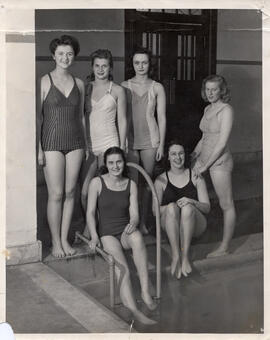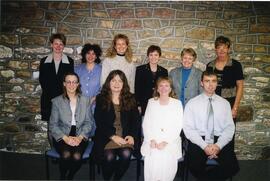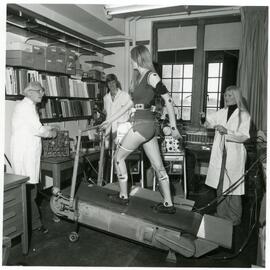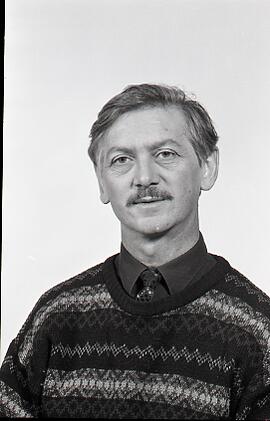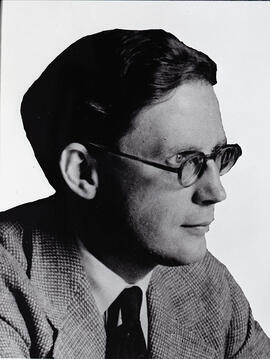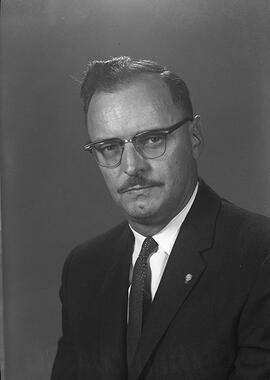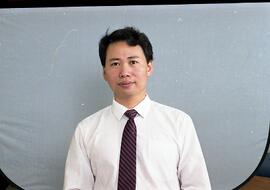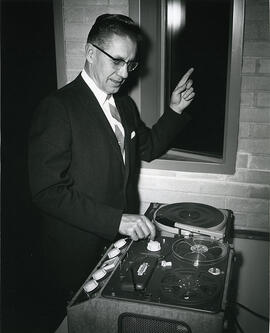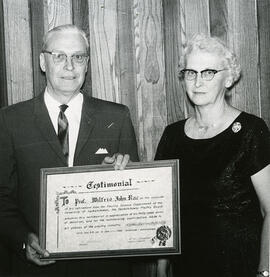Head and shoulders image of Hugh Arscott, BComm '48.
Bio/Historical Note: William Hughes (Hugh) Arscott was born 13 March 1924 in Saskatoon. His early education was at Westmount public school and Bedford Road Collegiate. From 1945-1948 he attended the University of Saskatchewan, earning a BComm. He served in the Royal Canadian Army from 1943-1945 and was discharged with the rank of Corporal. Arscott served on numerous local organizations, including the Kinsmen Club; the YMCA board; was director at large for the Canadian Arthritic and Rheumatism Society, served as president of the University Alumni and was elected to the senate of the U of S in 1963. Tragedy struck the family in 1968 when Arscott’s wife, Dr. Ruth (Albright) Arscott, and their son John, drowned at Jackfish Lake, Saskatchewan. Dr. Arscott, 43, and John, four, died when their boat capsized during a high wind. Arscott and their two older children, Will and Jane, clung to the boat until it drifted to shore.
Arscott was active in politics, first with the Progressive Conservative party, where he was once an aide to John Diefenbaker. Later, with the Rhinoceros party, he ran in the Saskatoon East riding In the 1984 federal election. Arscott received 340 votes, finishing fourth out of six candidates. Arscott worked in the life insurance business since 1951, eventually establishing his own firm, Arscott and Associates. He was well-known for his humorous observations of the Canadian and Saskatchewan political scene, and for his eyepatch. Arscott died in Saskatoon in 2002. Arscott Crescent and Street in the Evergreen neighborhood of Saskatoon are named in his honour (2020).

